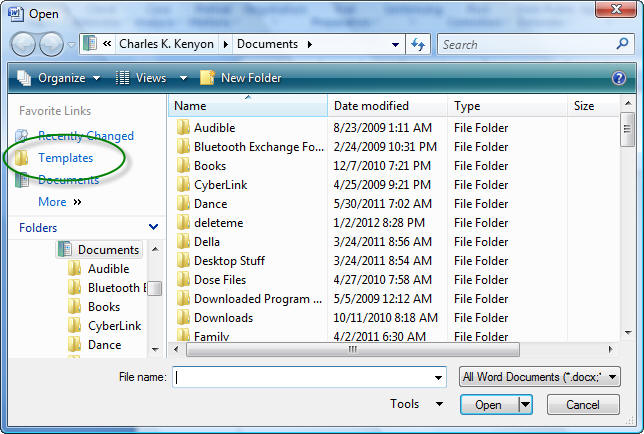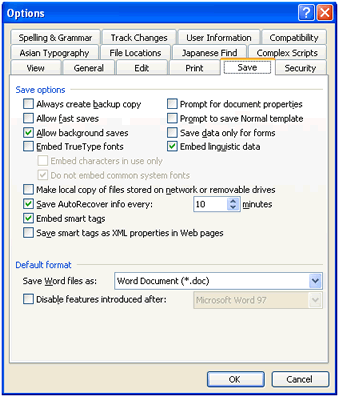

Open a new workbook and customize the options as you like.Go to Preferences > General > At startup, open all files in, and set xlstart as path.

Create a new directory in your home documents folder called " xlstart".(The location mentioned in this article also seems to have changed in later 2011 versions).īecause of confusion around the startup folder, here's what I recommend on a Mac:

xltx extension) not "book", as described in a this good article on Excelsemipro. Īlso, as of mid-2016, the name of the template should be "workbook" (manually remove the. In Excel 2016, according to Microsoft, there is currently no startup folder. Again, confirming the startup folder can be tricky, depending on whether y ou have Excel 2011 or 2016 installed (2008 not tested).
#PROMPT TO SAVE NORMAL TEMPLATE WORD 2016 MAC#
The process for setting a default Excel template on a Mac is similar to the steps above for Windows. Setting a default Excel template on the Mac Once you're sure things are working, remove the marker. That way, you can immediately see if your custom template is being used. One easy way to do this is to (temporarily) give cell A1 in your template a bright yellow or orange fill. Telling Excel about your own startup folder.make sure you use the correct path on your computer! Test to make sure your template is being usedĪfter you go through the steps to set up a default template, make sure you test to confirm your template is being used. Test to make sure the template is working.At Options > Advanced > General > Open all files in, enter the path to xlstart.Put your custom template the new directory.Create a directory called " xlstart" where you like.If you can't find Excel's startup directory, or if burying your template deep in an application hierarchy just seems wrong, you can tell Excel to look in your own startup folder by setting an option as follows: Once you've confirmed the location of XLSTART, drop in your template file. The startup path will appear below the command. Type: ? application.StartupPath in the window.Open the immediate window (Control + G).If you can't find the startup folder for excel (XLSTART), you can use the VBA editor to confirm Excel's start up path:
#PROMPT TO SAVE NORMAL TEMPLATE WORD 2016 WINDOWS#
Unfortunately, the exact location of XLSTART varies according the versions of Excel and Windows you use. Here are some common locations:Ĭ:\Program Files\Microsoft Office\OFFICEx\XLSTARTĬ:\Users\user\AppData\Microsoft\Excel\XLSTARTĬ:\Users\user\AppData\Roaming\Microsoft\Excel\XLSTART Can't find XLSTART?

The key is to put your template file into this folder so that Excel will find it. Whenever Excel is launched, it establishes what is called a "startup folder", which is named XLSTART. For example, if you're using the Czech version, you need to to use "Sešit" instead of "book". ** Based on comments below, it seems the name of your workbook must be localized for your version of Excel.


 0 kommentar(er)
0 kommentar(er)
